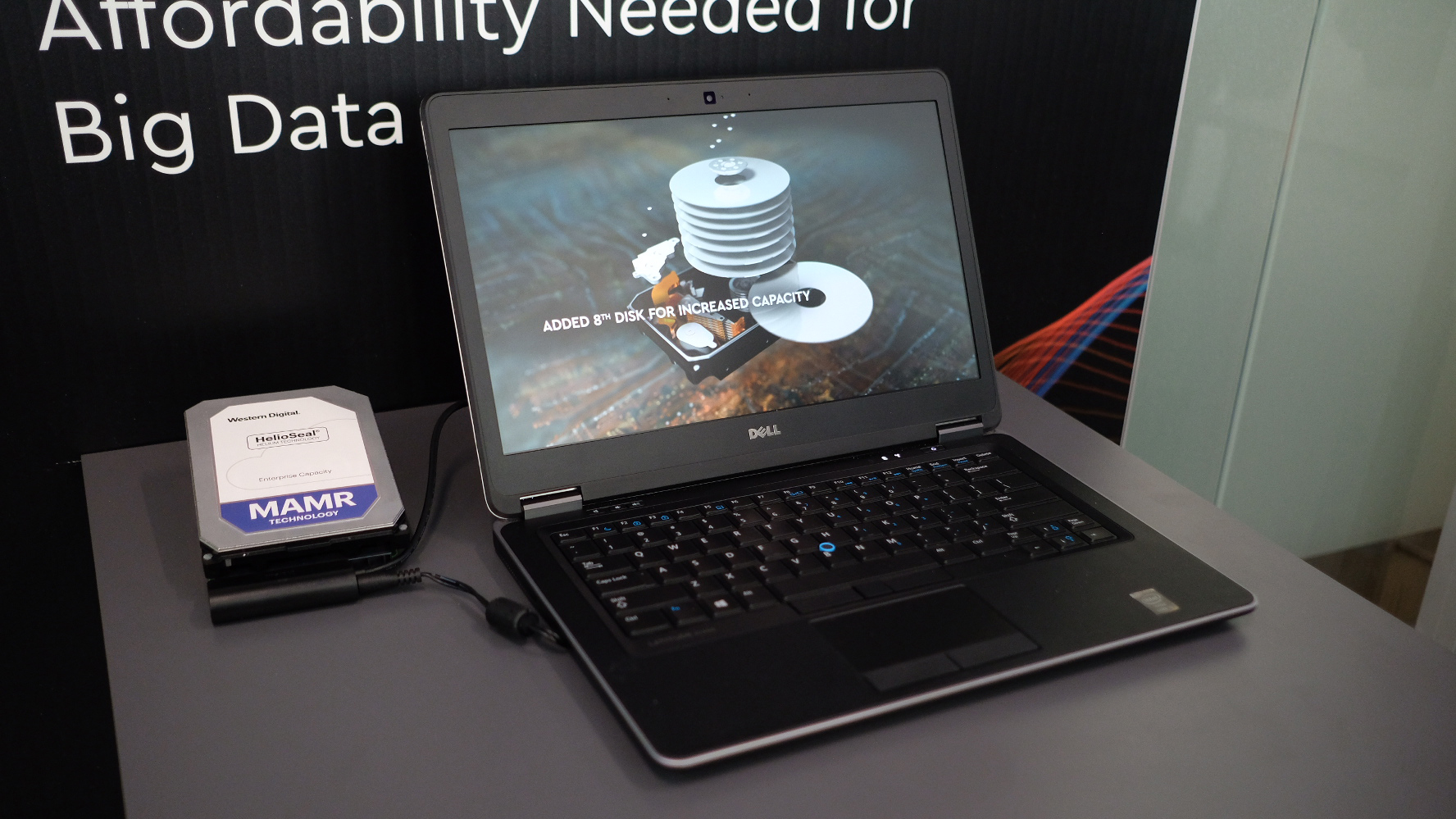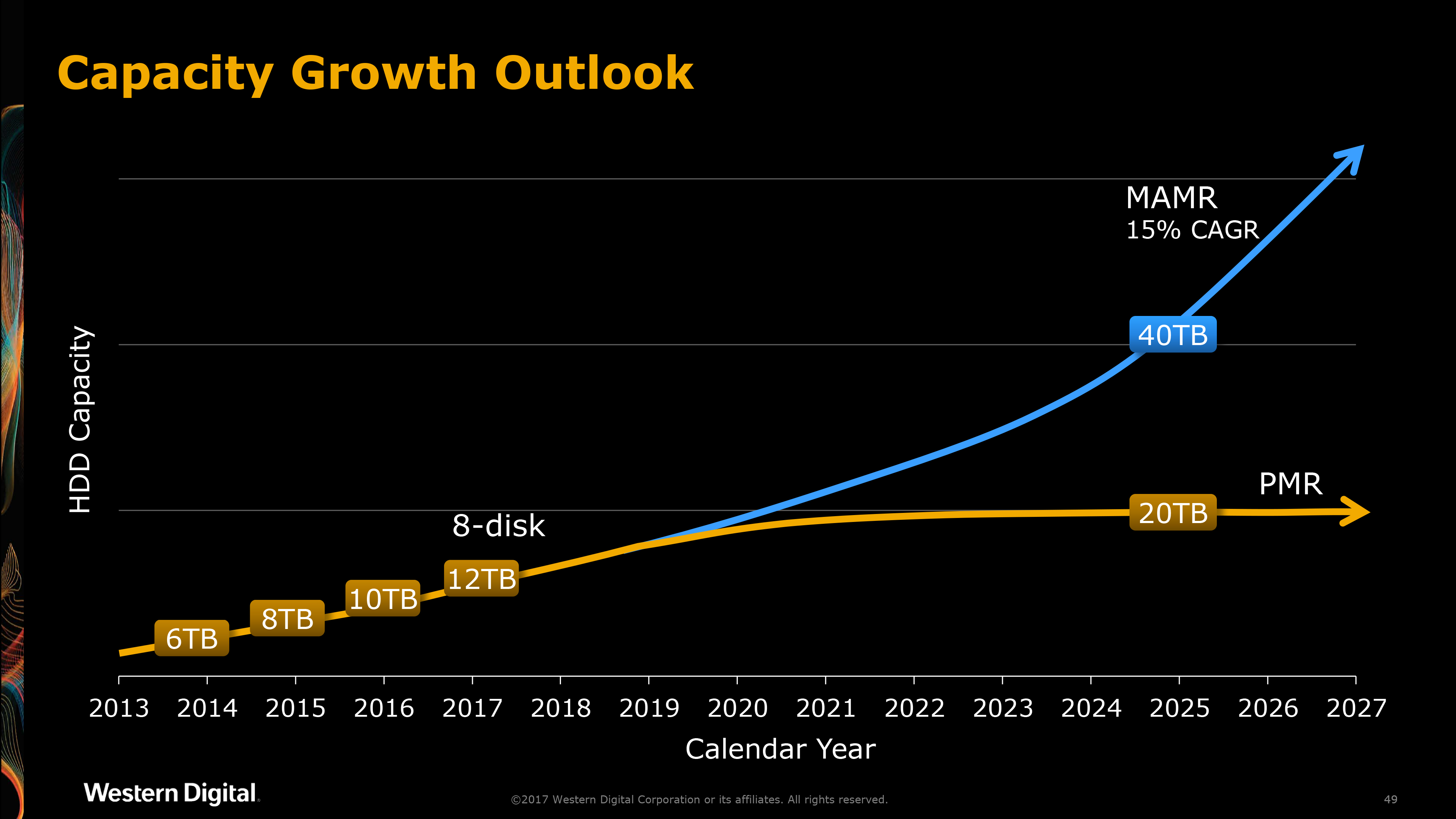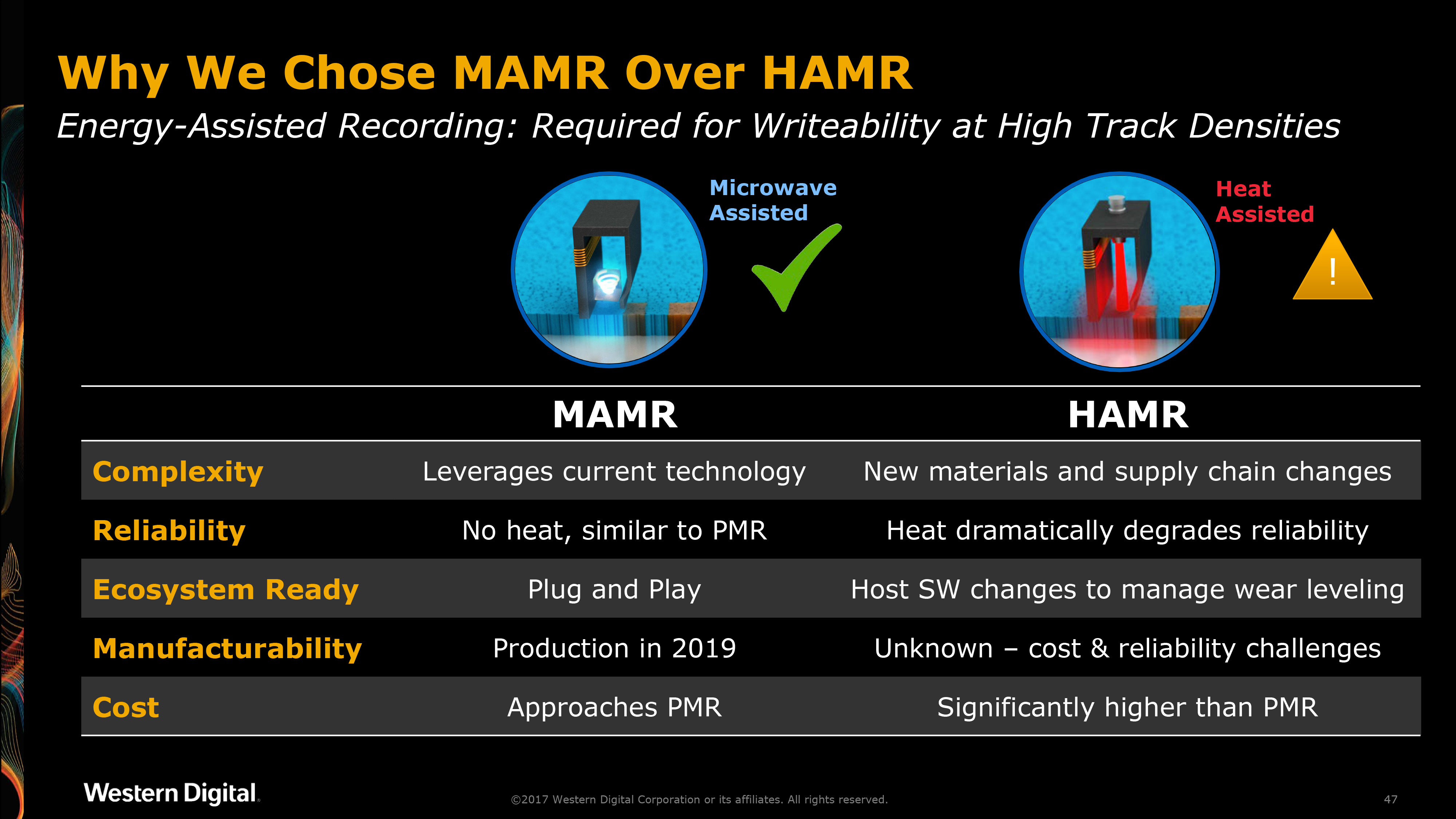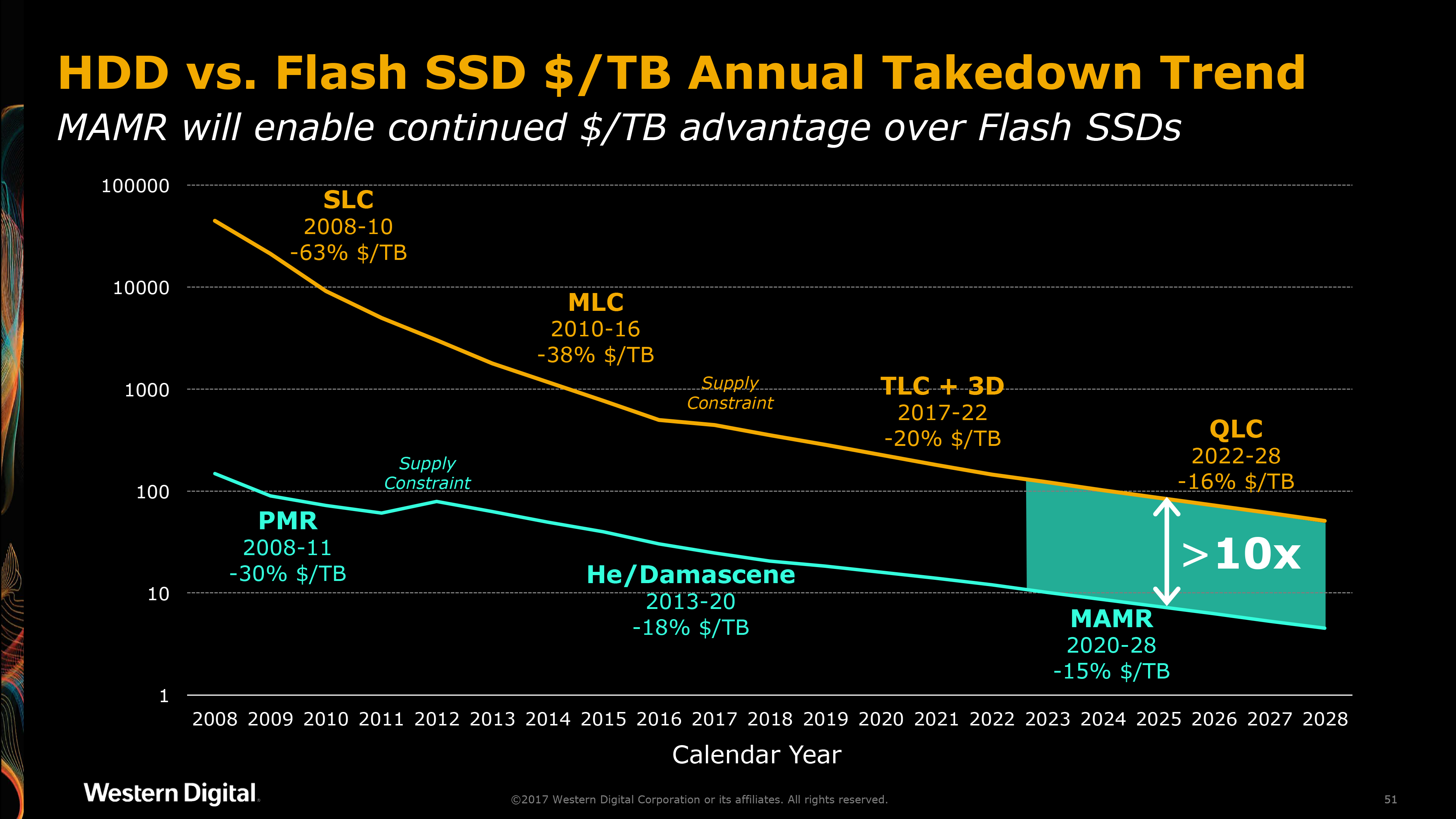
Western Digital (WD) has announced its next biggest innovation in hard drives, and it could bring capacities all the way up to 40 terabytes.
At its San Jose, California headquarters, WD announced the world’s first microwave-assisted magnetic recording (MAMR) hard drives. The storage company claims its innovative MAMR technology will enable its future hard drives to store more than four terabytes-per-square-inch.
The result will enable hard drives that could come with 40 terabytes of capacity and beyond by 2025.
At the heart of WD’s MAMR technology is a new spin-torque oscillator that generates a miniature microwave field that increases the ability to record ultra-high-density data.



How's it all work?
Basically, as the recording arm floats over the hard drive’s data platter, this extra radiation from the spin-torque oscillator helps excite the disk drive’s data storing medium to increase the amount of information that can be written.
Previously, WD looked into a heat-assisted magnetic recording (HAMR) technology to dramatically increase data storage capacity. However, the company realized this process introduced an entirely new manufacturing process as well as too much heat that ruined the reliability of hard drives by cooking them at 400- to 700-degrees Celsius.
By comparison, the spin-torque oscillator MAMR achieves the same effect without any additional heat or having to retool hard drives completely.
Are you a pro? Subscribe to our newsletter
Sign up to the TechRadar Pro newsletter to get all the top news, opinion, features and guidance your business needs to succeed!
For now, MAMR technology will be first introduced into WD's enterprise and server storage solutions. But, given that the company’s helium-filled Helio drives in November 2013 trickled down to the consumer market by March 2016 (in less than three years), we’re likely to see MAMR hard drives for regular consumers soon enough.
The need for more storage is only going to increase in the future as cameras, like the GoPro Hero 6, improve and smartphones, like the iPhone X and Pixel 2, feature higher-resolution sensors.
- Sorry, but we won't be seeing these drives in time for Black Friday
Kevin Lee was a former computing reporter at TechRadar. Kevin is now the SEO Updates Editor at IGN based in New York. He handles all of the best of tech buying guides while also dipping his hand in the entertainment and games evergreen content. Kevin has over eight years of experience in the tech and games publications with previous bylines at Polygon, PC World, and more. Outside of work, Kevin is major movie buff of cult and bad films. He also regularly plays flight & space sim and racing games. IRL he's a fan of archery, axe throwing, and board games.
